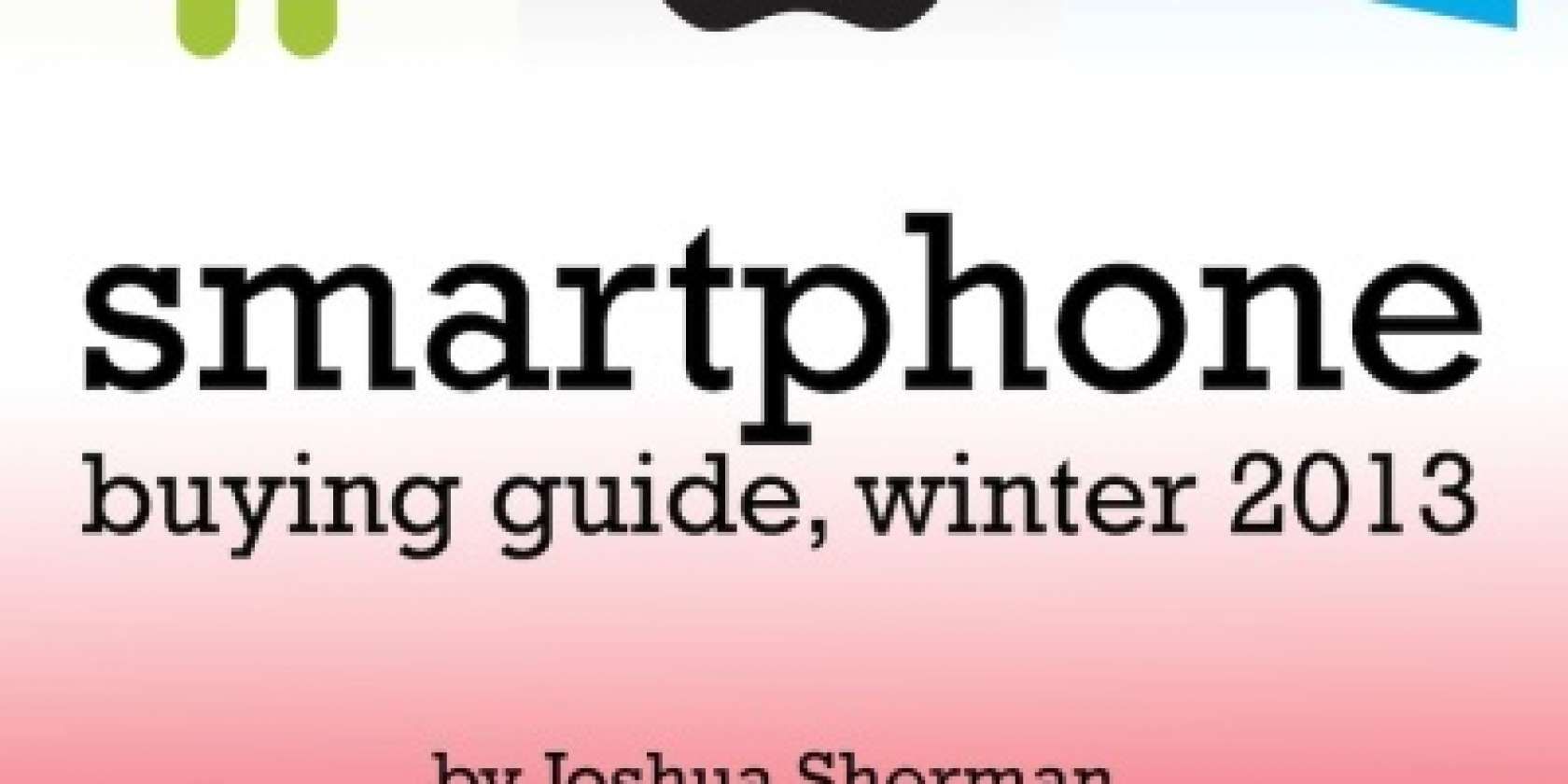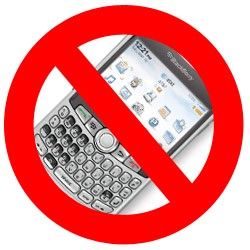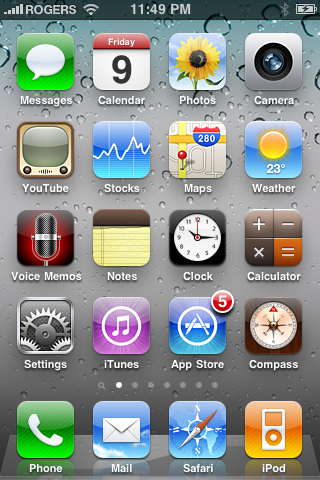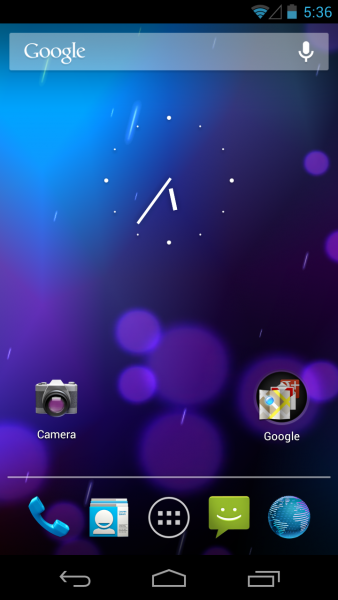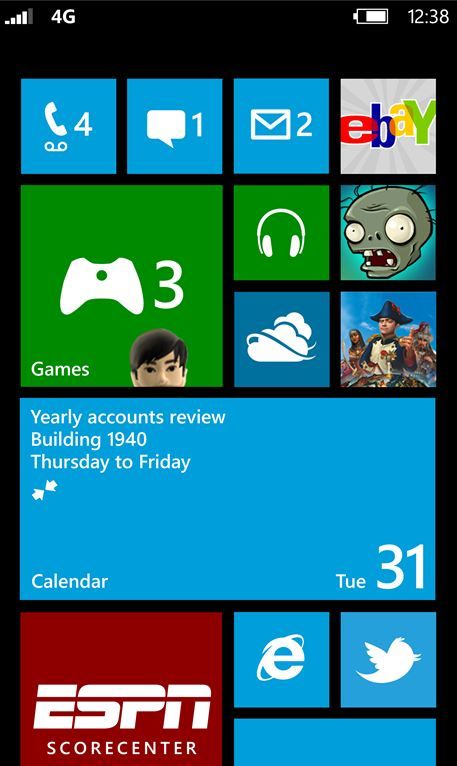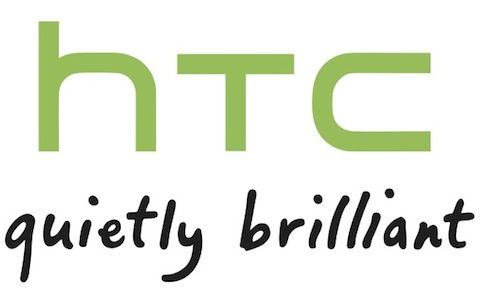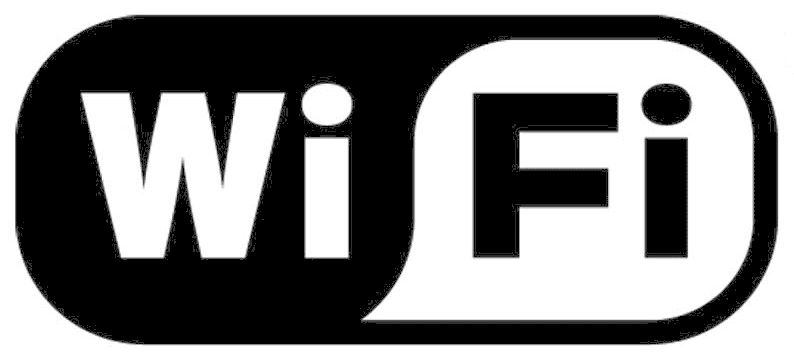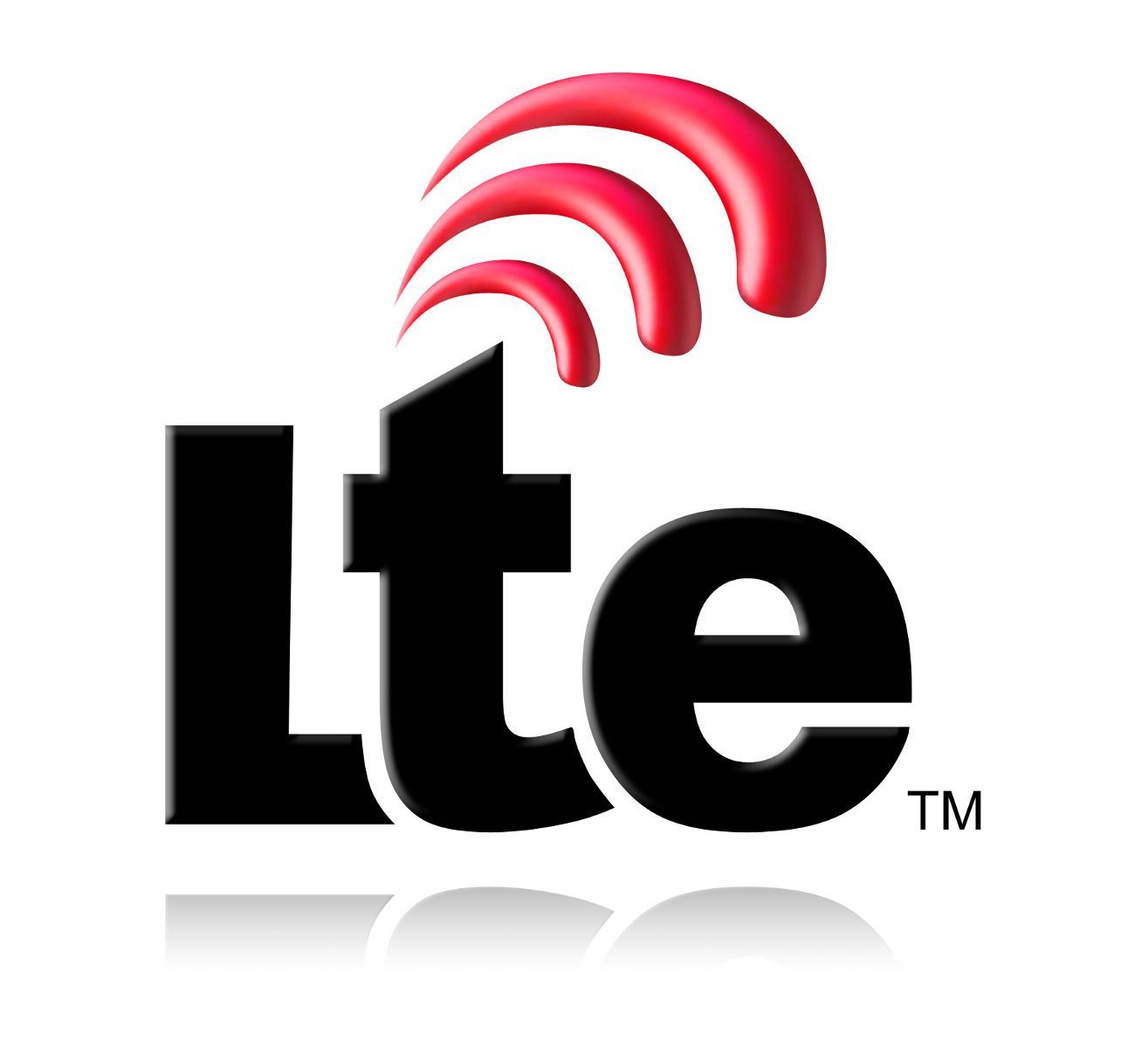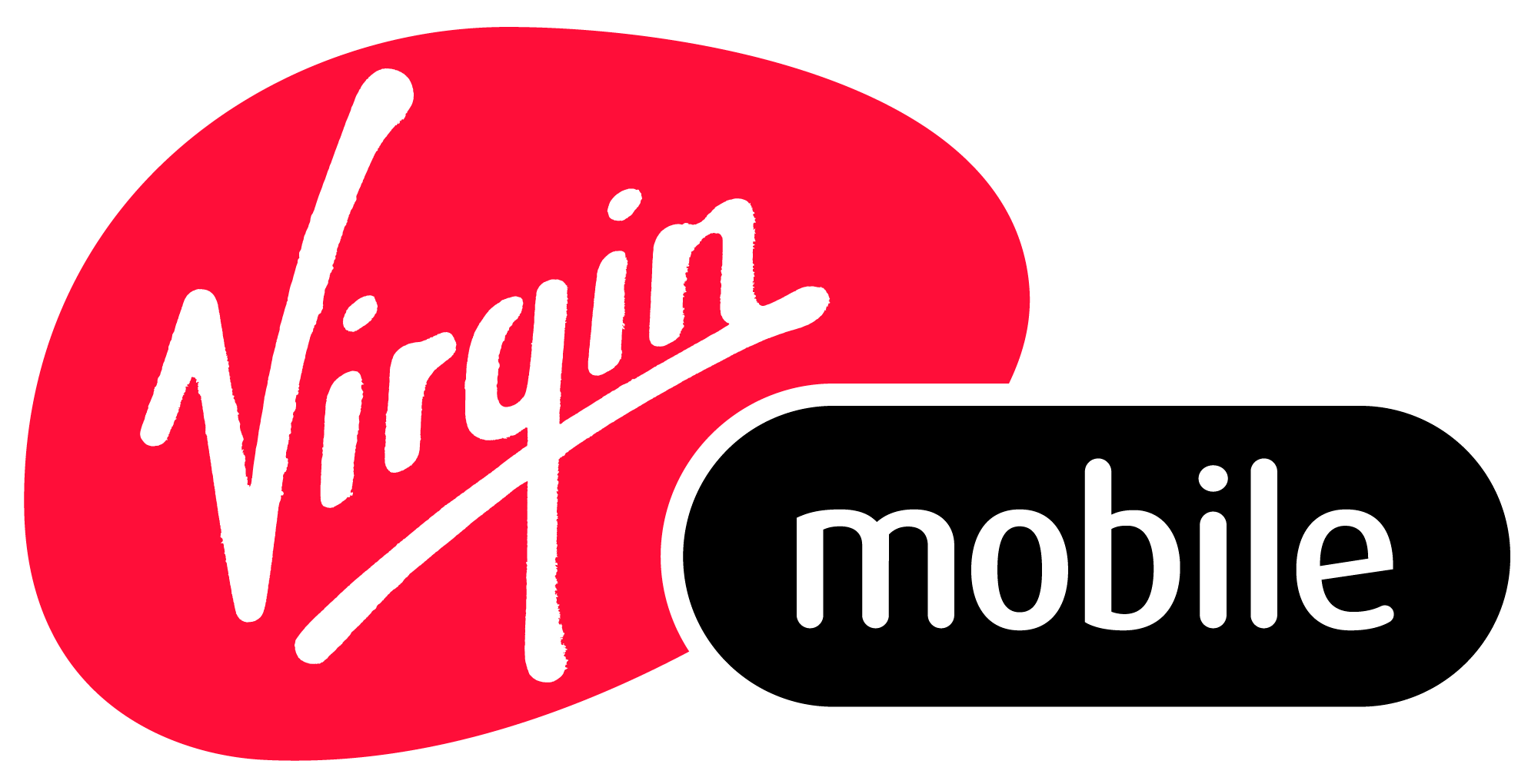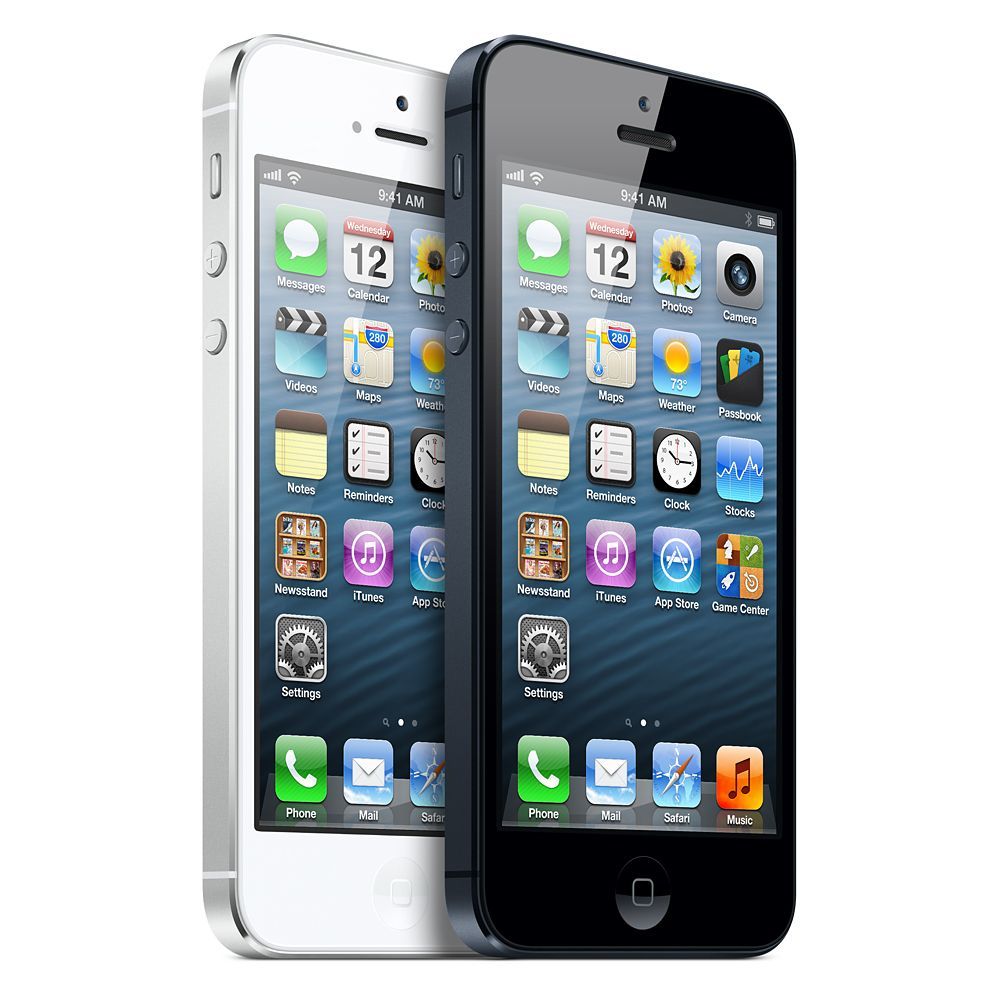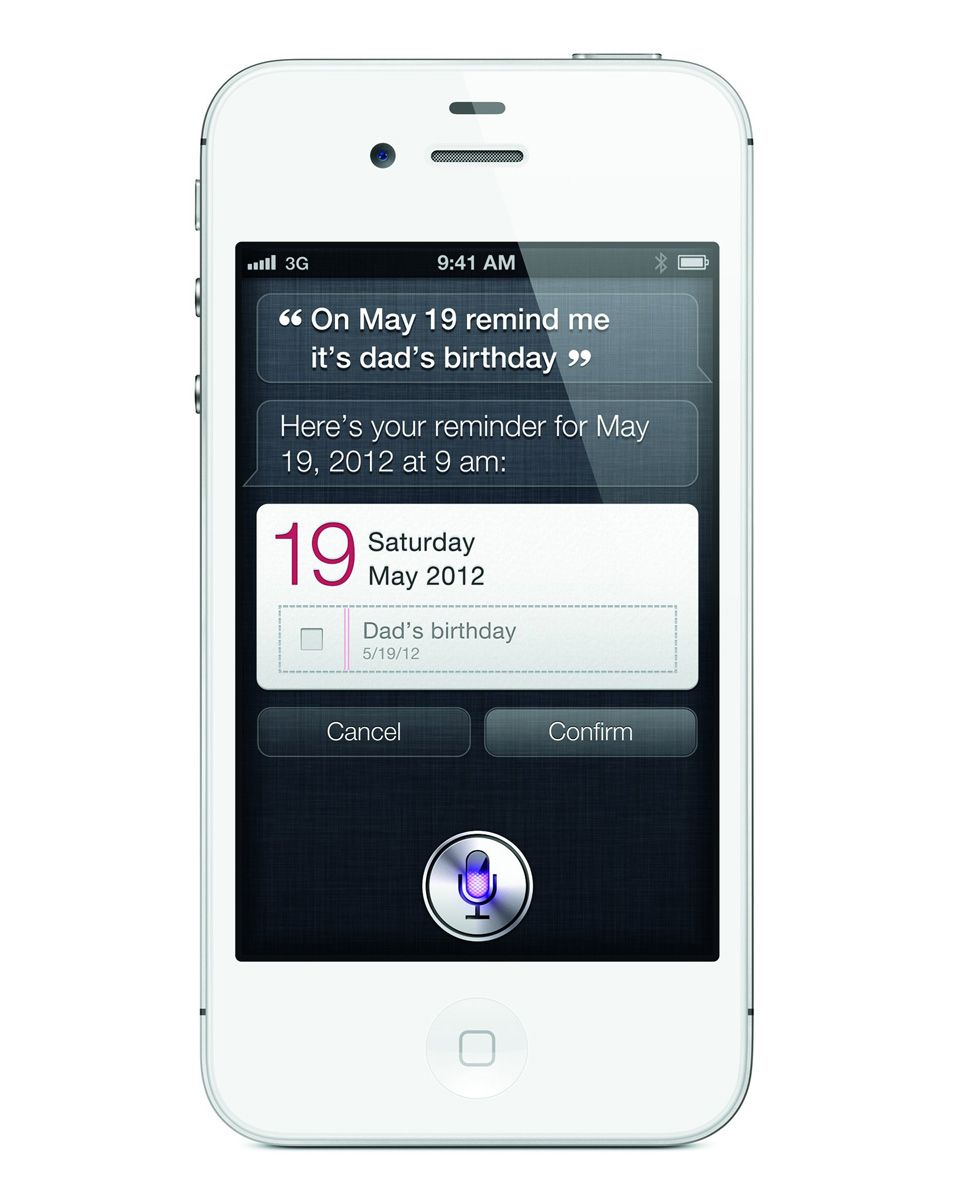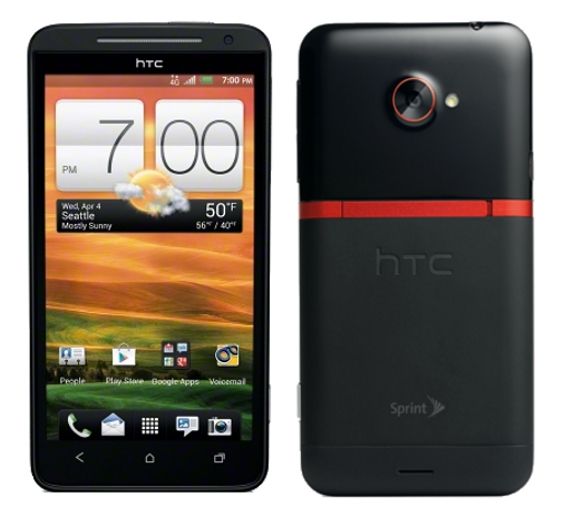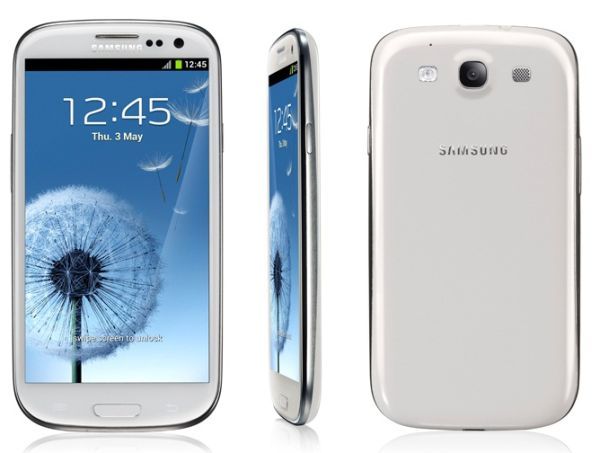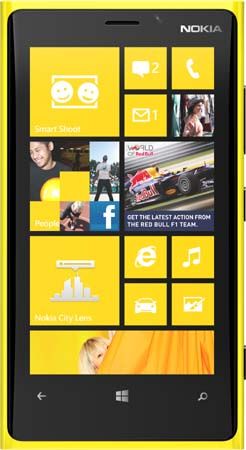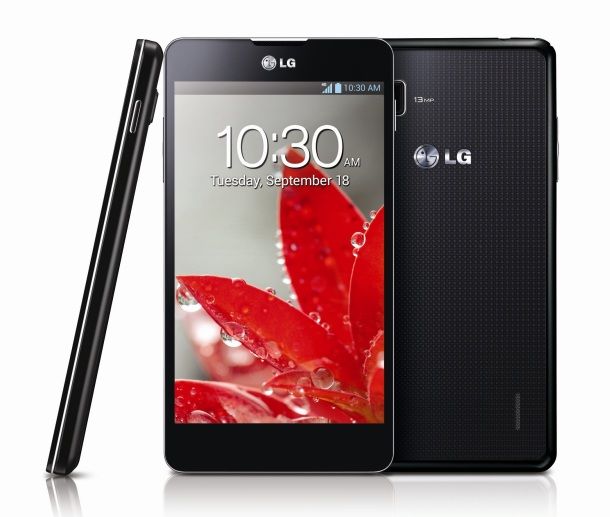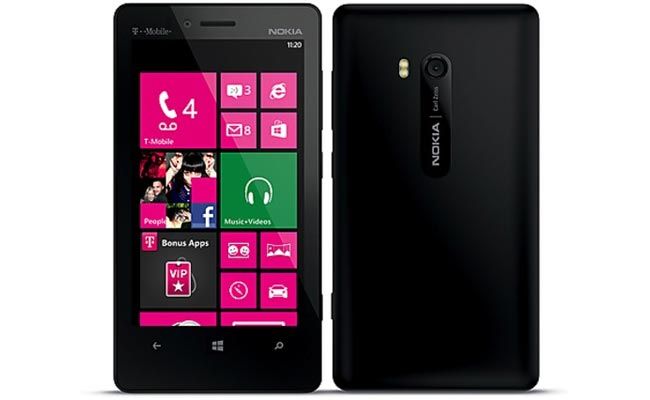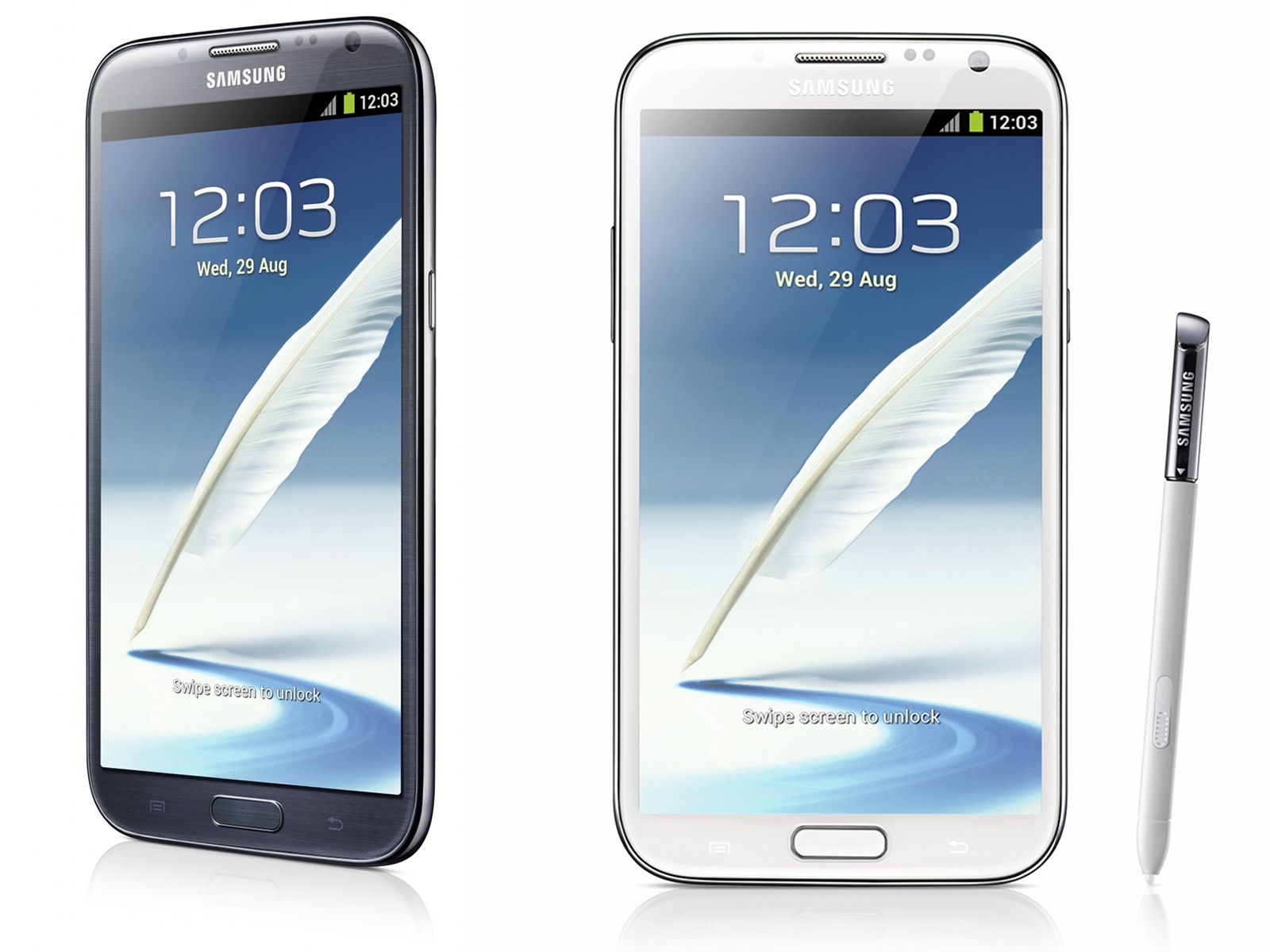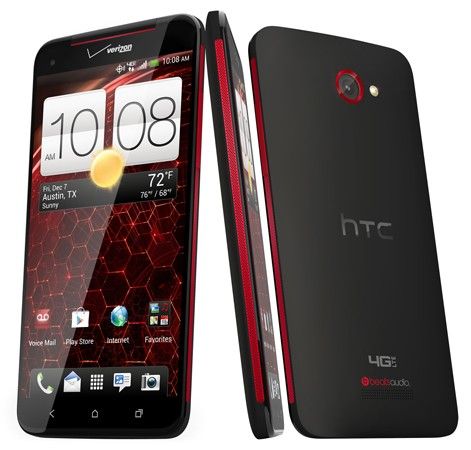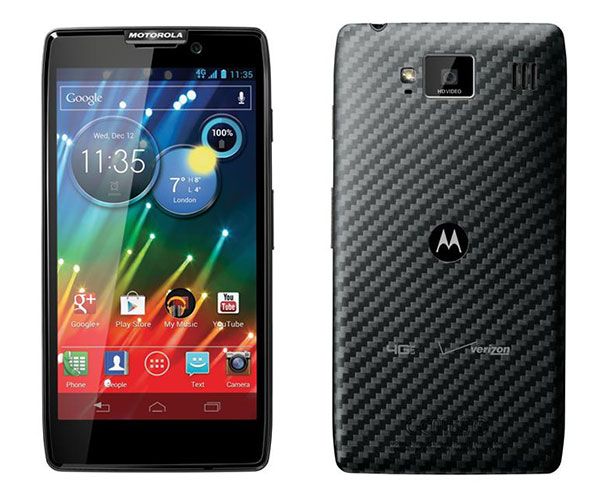Thinking of buying a smartphone, but don't know where to start and what smartphone to buy? Whether you're shopping for yourself or someone you love, it's time to read "Smartphone Buying Guide, Winter 2013". This guide goes over everything you need with full smartphone reviews, to know to make your purchase.
Use this guide as a reference to your late 2012 and early 2013 purchases, as it will carry relevant information on the statistics of the phones featured and relevant carriers on the market. Prices are not accounted for in this guide, as they vary greatly depending on where you live and the time of year.
Table Of Contents
§1?–?Introduction: Knowing The Facts
§2?–?Manufacturers, Developers, and More
§3?–?Carriers – Do They Matter?
§4?–?Compare & Contrast – Devices
1. Introduction: Knowing The Facts
While this holiday season may be one of the greatest we’re going to have in the realm of technology, it by far is also one of the most confusing for millions of people looking for the best phones they can buy. Phones continue to become both more affordable and more available. Perhaps the biggest craze in the mobile world is the ever increasing demand for smartphones in markets worldwide, and how it’s become the hot product everyone wants, or everyone is told they should get. While smartphones have become this top commodity, it doesn’t change the fact most people have very little of an idea of just what a smartphone is, let alone what it can do for you! Have no fear though, as this guide is here to help.
While the technology and ideas behind most smartphones are complicated, and beyond the scope of most average owners, it doesn’t change the fact smartphones are designed to be user friendly, and that there should be absolutely no reason why you can’t have a smartphone too. The purpose of this guide is to help decipher some of the complicated facts behind the smartphone so that you too can understand just what makes a smartphone tick, as well as the very many features the types of smartphones out there have. This “general idea” of what makes a smartphone a smartphone is meant to help just about anyone understand what a smartphone can do, and give insight into which one of the many smartphones out there is right for you. The idea here is to simplify the ideas, but not ignore the essential, in-depth features, so that you get the best of both worlds.
The guide tries to address a broad range of manufacturers and developers of smartphones, as well as an analysis oriented toward both a novice and experienced smartphone buyer. Use this guide as a reference to your late 2012 and early 2013 purchases, as it will carry relevant information (as of October 2012) on the statistics of the phones featured and relevant carriers on the market. Prices in these smartphone reviews are not accounted for in this guide, as they vary greatly depending on where you live and the time of year. This guide will also not say any one phone is better than another, and instead suggest phones based on your needs, and compare specifications (with easy to read explanations along the way). For now, let’s just break down the facts.
Know the Facts
To understand the best smartphone for your needs (and money) we must first break down just what a smartphone is. While there are normal cellphones, which have been around for decades, the last five years have seen an explosion in growth for smartphones, ever since the introduction of Apple’s iPhone in 2007. Once a luxury item, smartphones are now increasingly common – they’re in handbags and pockets everywhere.
But just what is a smartphone? Where does a regular cellphone end and a smartphone begin? Once we understand what makes a phone a smartphone, we can start figuring out what kind of features we want out of our devices, and what to look for when it’s finally time to grab that new and shiny phone.
The first, and most apparent feature behind a smartphone is its software, also known as the Operating System. Almost all cellphones utilize very similar and basic software called BREW – which is something you’ve probably never heard of, and will never need to know. On the other hand, the operating system behind a smartphone is powerful, advanced, and user-oriented. The biggest thing people talk about between smartphones is which of the various popular operating systems out there it runs on. For those people not so tech savvy, an operating system is the interface that you run the smartphone from. An operating system is broken down into applications, or apps, which are what you use to make phone calls, send text messages, play games, browse the web, and much, much more. In short, behind every smartphone is an operating system, and on every smartphone operating system are apps. Together these make up the software of a smartphone, and essentially create the cosmetic differences between an iPhone5 and Samsung Galaxy S III when you turn them both on. This guide will go over the basics of each of the four major operating systems used by smartphones for sale, and help you decipher which one is the best choice for you.
The second feature that makes a smartphone so unique is its hardware, which for most cellphones is an irrelevant feature. When buying a cellphone, often the features like a keyboard or large screen are about as in-depth you’ll get when figuring out which hardware is right for you; smartphones are more complex. Smartphones vary greatly in terms of hardware: touch-screen, keyboard, processor, RAM, and many other components. For smartphones, touch-screens and keyboard make up the user interface, while processors, RAM, and other such features make up the computing interface, which combine to create a smartphone.
Both the software and hardware are essential in making a smartphone what it is, and affect both its performance, and how the device will best serve you. There are also other factors to consider, such as your preference in wireless carrier, availability of special wireless services such as 4G (and just what 4G is) that contribute to analyzing the needs you have, your budget, and the best phone for you given these circumstances.
Because Knowledge is Power
This smartphone buying guide will analyze these factors and more to help you in finding the right phone. To start off, let’s take a moment to learn some of the key facts and figures behind smartphones so that we have a broad, general understanding. This isn’t hard stuff, and knowledge is some serious power. The next time you head into your local wireless store, not only will you be a whiz at smartphones, but you’ll be able to figure out which phone is right for you before even walking in. So let’s get started!
2. Manufacturers, Developers, and More
HTC, RAM, CPU, iOS, and more. There may be acronyms and names you recognize in this smartphone review guide, and there will likely be many you have no idea of what they are. This chapter is going to give you a crash course in just about everything that matters with a smartphone, so you know the facts when we start comparing and contrasting the various phones on the market. It’s important to understand the terminology so that you stay on track with this guide, and also have better understanding of who makes smartphones, how they work, and how the market works. Again: knowledge is power, so let’s dive right in!
Developers & Manufacturers; What’s the Difference?
As said before, at the root of every smartphone is its operating system, which really sets the stage for what sort of experience you’re going to have using the smartphone. Along with the operating system is its various applications, which work with the operating system to create a fulfilling user experience. Meanwhile, under the hood, you have your various hardware components like the user interface and computing interface, which affect the smartphone’s performance, and whom it is best suited for. Behind the software and hardware are often a large team of different companies that help make the smartphone into what it is, and they can be broken up into two groups: the developers, and the manufacturers.
In short, the developers are behind the operating system, applications, and various software components of a smartphone, and the manufacturers are behind the user interface, computing interface, and various hardware components. Together, developers and manufacturers make the amazing smartphones we know and love. What’s important to understand about this is that there are companies that are developers, companies that are manufacturers, and even companies that are both – this guide will explain just who the most popular companies are and where they stand in the market.
Microsoft is a developer, as they currently only develop their operating system, Windows Phone OS, and do not currently manufacture any phones for the market.
LG, HTC, Samsung, Nokia, and Motorola are manufacturers, as they only build phones and do not currently develop their own operating systems. There are also many other, lesser-known manufacturers on the market. But this guide is only sticking to the largest and most popular of manufacturers.
Google and Apple are both developers and manufacturers. Not only do their make their own operating systems (Android and iOS, respectively) but they also manufacture phones for the mobile market as well. While we’re not trying to confuse things, it should also be stated Motorola has been bought by Google. So while the two companies appear separate for now, in the future this may change.
Now you may also be wondering something else – where’s RIM and Blackberry? Although RIM (Research In Motion) is a well-known company as the maker of the Blackberry operating system and series of smartphones, they have been excluded from this buying guide for a variety of reasons. For one, RIM’s smartphones are very out of date and have not been updated to match the latest hardware and software the major competitors also offer. Blackberry’s OS 7 is not very impressive, and their major update (Blackberry OS 10) is not due until mid-2013. The application & developer support is very minimal, and the app store RIM offers is tiny with just 70,000 apps. While you can buy a RIM Blackberry, we don’t advise it, so their smartphones are not included in this guide. If you really want a Blackberry, we suggest you wait until Blackberry OS 10.
With that all out of the way, let’s start to break down the facts, a short history, and key features of these phones.
The Mobile Operating System & Their Developers
Apple’s iOS
Released: June 2007
Latest Version: iOS 6.0
History: If there’s anyone who deserves credit for starting the smartphone craze, it’d have to be Steve Jobs, who unveiled iOS to a packed crowd at in January of 2007. While smartphones have been around for years before the iPhone because of BlackBerry, Palm and Windows Mobile, the iPhone was another level entirely. Featuring an all-in-one interface never seen before, a powerful app store, and a beautiful interface, it really was a game changer. Since the unveiling Apple has taken the mobile phone world by storm, selling more than 85 million iPhones.
Features: Apple’s iOS centers itself on something called the Springboard, but the name is not important – you just have to know that the screen for every iPhone through iOS is a simple row of folders and applications that you can easily open and move around. On the bottom of every screen is a set of permanent apps that stay with you as you swipe through the various pages of applications you have. The interface is responsive, quick, and easy to use. Recent updates have offered great features for the iOS platform, such as a notification bar, Siri voice assistant, and interactive Game Center. In short, iOS is clean, responsive, and beautiful.
Notes: The latest version of iOS (6.0) uses a new type of Maps application that many are saying is terrible, and Google no longer offers a Maps application for iOS, though there are ways of accessing Google Maps if you wish. You can also use alternative applications such as Waze for your navigation needs. Apple released a list of alternative Map apps for iOS as well.
Apps: For years, Apple’s App Store has been the largest and most popular place to download applications from thousands of developers all over the world. While Android is in a close second place with about 675,000 apps, Apple still remains king, with a hefty 700,000 applications on their market and over 30 billion apps downloaded ever since the store opened in 2008. While there are more paid apps on Apple’s App Store compared to Google’s Play Store, it’s safe to say Apple has the most diverse and impressive selection of applications available.
For more information about iOS, check out our iOS guide.
Google’s Android
Released: September 2008
Latest Version: 4.2 (Known as Jellybean)
History: Google, along with a bunch of other big manufacturers, formed the Open Handset Alliance (OHA) in 2007, right around when the iPhone was storming the market. While Android, as a concept, has been on the table with Google since 2005, it wasn’t until 2008 that Google unveiled their first Android version and device, the G1. Ever since then Google has been building momentum against Apple, mainly because they offer the software for free and the open source usage by their partners means the manufacturer has a lot of control over the operating system. Because of this, Google has been picking up speed in recent years, and looks to eclipse Apple soon.
Features: Android’s Operating System centers on a “Home Screen” and “Application Drawer”, which are the two main components you experience in the operating system. When the smartphone is unlocked you are first presented the Home Screen, which can be customized completely to the user’s desire, ranging from a variety of wallpapers to special applications known as “Widgets”, that can show customized content and animations to the user. The Home Screen can be swiped from left to right, giving you plenty of space for widgets and other shortcuts. The Application Drawer is where all your applications are stored, and can be viewed from the Home Screen with the touch of a button, and is sorted alphabetically. While you can slide to unlock or use a PIN on an iPhone, Android supports unlocking with a PIN, a picture pattern, or even facial recognition. Android’s features are certainly much more robust, customizable, and unique, but they also are much more complicated, and have a steeper learning curve than Windows Phone 8/7.8 or iOS by far. Despite this, the OS is certainly a more advanced option for those looking for complex options and solutions.
Notes: Because Android is open source software, each manufacturer utilizes Android with their own flavor and preferences, causing something known as fragmentation. Basically, manufacturers use different versions of the operating system on their various devices. While most of the largest manufacturers try to offer the latest possible version of the operating system, some choose not to update, meaning some new phones are not running the latest version of Android and the manufacturer does not have plans to update them. We will note this as we introduce each of the phones that run Android. Other versions currently in use that are mentioned in this guide include 4.0 (Ice Cream Sandwich), 2.3 (Gingerbread), and 2.2 (Froyo).
Apps: Google’s Play Store has grown exponentially since its unveiling in 2008, and is just behind Apple’s once tremendous lead on the application market at 675,000 apps, compared to Apple’s 700,000. Google also features many more free and ad-based apps on the Play Store, as they were the first to offer developers the option for supported advertising through AdMob, meaning more free apps for you! It’s fair to say that while Google’s Play Store is a little behind Apple’s App Store in both the number and quality of applications, it is certainly a worthy competitor.
To find out more check out MakeUseOf's Android Guide
Microsoft’s Windows Phone OS
Released: November 2010
Latest Version: Windows Phone 8 / 7.8
History: While Microsoft is certainly the latest player in the current state of the mobile market, the company is far from new to the playing field. For years before the Windows Phone, Microsoft ran a predecessor known as Windows Mobile, which has since been discontinued. While rumors of a sequel for Windows Mobile were in the works for years, Microsoft finally spilled the beans in 2010, when they unveiled Windows Phone 7 as a successor, and a pair to their Windows 7 PC operating system. Since then, Microsoft has made strides to feature new technology, and has released Windows Phone 8 and Windows Phone 7.8. While the older, Windows Phone 7 phones will not be upgraded to Windows Phone 8, Microsoft has promised users a Windows Phone 7.8, which is a worthy back-port of the many features the new OS has featured.
Features: Windows Phone 7 and 8 are both renowned for their simplistic, yet clean, articulate, and powerful Metro UI. Microsoft now uses the Metro UI on almost all of their products, and it’s designed to be touch-oriented, and easy to access. From the home page a user can view a variety of “panels” that are in a variety of shapes and colors, and link to a variety of applications and items. There are also widgets that can be placed in panels that offer a bit of flair in the Metro interface, such as a photo gallery or the weather . The colors are bright, the design is sleek, and it’s very easy to use. The Application Drawer is simply accessed from a slide to the right, and is alphabetical. What makes Windows Phone 8 exciting is Microsoft’s new investment in higher resolution screen sizes for devices, wallet functionality, and other impressive features.
Notes: Microsoft has brought amazing new features to Windows Phone 8, but has already stated it will not be updating the current Windows Phone 7 devices to Windows Phone 8. Instead, a pseudo-Windows Phone 8 OS, Windows Phone 7.8, will be released to accommodate, and feature most of the new software options. While Windows Phone 7.8 will be available for first-generation buyers of the Microsoft smartphone, it’s best to stick to Windows Phone 8 due to its support and reliability as an OS by Microsoft in the years to come.
See, Windows Phone 8 vs Windows Phone 7.8 – What’s the Difference?
Apps: Microsoft has had a rough couple of years since the introduction of their smartphone operating system, but their app store has continued to grow, and now has more than 100,000 apps, and is growing fairly quickly. Perhaps the real excitement in the Windows Phone Store is the potential for greater XNA and Direct-X development, which is something Microsoft has been promising for a long time. While Microsoft is behind in applications, the plan seems to be to lure more developers from Xbox toward Windows Phone, and if they continue to invest in their impressive XNA and Direct-X platform, this may very well happen. The Windows Phone Store may be behind, but it’s gaining speed.
The Manufacturers & Their Devices
To understand just what type of hardware there is out there, let’s first talk about the largest manufacturers out there, and who they’re building smartphones for.
HTC
History: HTC has actually been building smartphones long before both Android and iOS were around – they made phones using Microsoft’s Windows Mobile, so they’re certainly far from new. The Taiwan-based company also was the manufacturer behind the G1, which was Google’s first branded smartphone and “prototype” for Android back in 2008. Today, the company builds millions of phones for customers all over the world.
Builds Smartphones Running Android and Windows Phone 8 / 7.8.
LG
History: LG is South Korea’s second largest company, and builds everything from smartphones to washing machines. The company has been producing phones, like HTC, prior to both iOS and Android, and continues to build mid-priced phones to this day. While they used to build Windows Phone devices, LG sticks to Android these days.
Builds Smartphones Running Android.
Samsung
History: Samsung is the largest company in South Korea, and much like LG has been building smartphones for a very long time. Unlike LG, Samsung builds higher end, top-of-the-line devices, and has replaced LG as a partner with Microsoft for high-quality Windows Phone 8 devices. These days Samsung produces a wide range of smartphones and has had some heated competition against Apple’s iPhone.
Builds Smartphones Running Android and Windows Phone 8.
Motorola
History: Motorola has been a strong partner of Verizon Wireless in recent years, branding a very powerful (and successful) line of smartphones named DROIDS that feature the Android operating system. Motorola’s mobile manufacturing division was recently bought by Google, and will likely collaborate with their new parent company in the coming years.
Builds Smartphones Running Android.
Nokia
History: Nokia has been around for decades as one of the first major cellphone manufacturers in the world. These days though, the company has fallen somewhat into obscurity, as their Symbian operating system is far from popular in America. Earlier this year, however, Microsoft announced a partnership with Nokia, and the company has been since growing back to prominence as a major Windows Phone 8 / 7.8 manufacturer in the United States and Europe.
Builds Smartphones For Windows Phone 8 / 7.8.
History: While not a major manufacturer, Google does build a few of their own phones themselves. While their G1 was branded as an HTC device, these days Google collaborates with manufacturers with their Nexus series of smartphones as a Google cross-brand. Google has cross-branded with both HTC and Samsung in the past.
Builds Smartphones Running Android.
Apple
History: Last, but certainly not least, is Apple. Since 2007, Apple has been building their iPhone, changing little, but offering newer and faster hardware to provide a seamless, high-performance experience for their users. From the original iPhone to the iPhone 5, Apple has designed all of their devices in-house and has sold more than 85 million of the devices ever since.
Builds Smartphones Running iOS.
Now that we know the various manufacturers out there, we can go over some of the terminology used in the industry. Use this guide as a bit of a glossary for the various technical words you’ll see as we go over through this guide. Be sure to refer back to it for your convenience!
Terminology
Processors: Processors are the “engine” of a smartphone, and determine how fast a smartphone can compute, run applications, etc. With computers, the speed of a processor is extremely important, however the processing speed of smartphones can vary greatly and still be fairly effective. Some of the latest smartphones feature quad-core processors, while most still use only dual or single core processors. A quad core processor can run four simultaneous processes, and run extremely fast, but also consume an immense amount of battery life. Despite this, the type of processor depends on your needs as a smartphone user, and we’ll compare processor specifications later. Processors measure their speed in megahertz and gigahertz (MHZ and GHZ respectively), where a gigahertz is 1000 megahertz.
RAM: Random Access Memory, or RAM, is essentially a set amount of memory for usage by applications currently running.
ROM: Read only Memory, or ROM, is actually a shared term for both the storage memory that an operating system is installed on, as well as the internal storage for the device. Read Only Memory is measured in megabytes and gigabytes, and typically a ROM can range anywhere from 512 megabytes of storage to 32 gigabytes, depending on the phone.
Graphics: Smartphones also include an often overlooked feature: a Graphics Processing Unit (GPU). While a GPU is an essential part of a smartphone, unlike a computer it is not a major feature that affects performance as greatly as RAM or processing power. As a result, the GPU is often not a major deciding factor in choosing a smartphone.
Screen Size: The most immediately obvious feature of a smartphone is its screen size, as this affects how easy it is to handle a phone. Screens range greatly in size from smartphone to smartphone, and are measured based on the diagonal length of the screen. Screens can also vary in the type of display used, such as an LCD, AMOLED, or Retina Display. An AMOLED display has greater contrast and resolution than an LCD display, while a Retina display has a greater resolution than both LCD and AMOLED displays. What matters most is not resolution or contrast, but rather how pleasing a viewing experience your smartphone offers you, especially if you plan to use it all day.
WiFi: WiFi is perhaps one of the most common and well-known features of a smartphone connectivity, as using your data plan for everything quickly becomes expensive. It’s why most phones can also connect to your home Internet connection, using WiFi. These days, most smartphones utilize one of two different WiFi standards: WiFi 802.11g and WiFi 802.11n. They differ only in speed, and you should only be considering the type of WiFi as important for your smartphone if you plan to be using a WiFi N network. If you don’t know what kind of WiFi network you have, don’t worry, as you can use either WiFi G or WiFi N for your wireless needs, as almost every wireless network uses WiFi G, and those that use WiFi N are backwards compatible.
4G: 4th Generation Cellular Data, or 4G, is perhaps one of the fastest growing and publicized features of smartphones, as it claims to offer high-speed data connectivity. In reality, 4G connectivity is actually a bit more complicated than that, and will be explained in the next chapter.
NFC: Some newer smartphones feature something called Near Field Communication, or NFC. This allows your smartphone to communicate with other electronic devices nearby, and gives you a bunch of new nifty ways to interact. Some NFC applications allow you to use your phone as a credit card at a store, share contact information with other phones, download music from posters, and more.
Cameras: The last major feature essential to smartphones these days is the camera. While a camera is a rather straightforward component of a smartphone, it’s important to also understand the key metric of a camera is its resolution, which is measured in megapixels. Most smartphones offer both front and rear cameras, allowing you to take high resolution photos as well as video chat with your friends.
Recommended reading: Smartphone Specs For Dummies: What Should You Look For?
Now, before we start comparing devices, let’s talk a little bit about carriers, and just how they matter in this big guide of phones, as your carrier decides the types of phones you can buy, among other things.
3. Carriers – Do They Matter?
While the software and hardware are important parts of a smartphone, one cannot also forget the part that cellphone carriers play in the world of smartphones these days. Between 3G, 4G, and everything in between, it’s safe to say that carriers are important in deciding which smartphone is right for you, as they offer a variety of different plans, and cell phone coverage.
The Big Four
In the United States, cell phone coverage is split between four large cell phone carriers: AT&T, Verizon Wireless, Sprint, and T-Mobile. While there are also smaller service providers like Metro PCS, this guide will stick to the big four, as they account for about 90% of the market.
AT&T
It isn’t easy at the top, and AT&T probably knows it better than any other company out there. With more than 108 million devices connected, AT&T has the largest cell phone network in the United States, and saw tremendous growth as the exclusive carrier of the iPhone for nearly 3 years. Regardless, AT&T gets a lot of flak for poor customer service, being the first carrier to impose data caps, having a weak 4G LTE network compared to Verizon, and its pricing.
Verizon
Over the last few years, Verizon has gone all out in investing itself in 4G LTE. While AT&T, T-Mobile, and Sprint all invested in technology such as HSPA+ and WiMaX, Verizon dived straight into 4G LTE, and it paid off big time. Today Verizon has the largest 4G LTE network available, with more than 100 different markets covered, and having more LTE coverage than all other carriers combined. With more than 100 million devices connected, Verizon is a close second to AT&T in market coverage, and contends to be number one once more. Also like AT&T and T-Mobile, Verizon has data caps on its 3G and 4G connectivity.
Sprint
Of the four carriers, Sprint is special in that it’s the only carrier left to still offer 100% unlimited, no-restriction data usage on its plans. While Verizon and AT&T offer limits and T-Mobile throttles you, Sprint’s entire game plan is to offer customers truly unlimited data, and it appears to be working for them. The company, despite some shortfalls, has maintained its place as the third largest carrier in the country, and has recently had a majority stake bought out by Japanese cell phone carrier Softbank. While the future of Sprint is under Softbank, for the present the company stands out as the only unlimited carrier out there – but still severely lacks a strong 4G LTE network.
T-Mobile
As a subsidiary of the European telecommunications company Deutsche Telekom, T-Mobile doesn’t always get so much attention out here in America. As the fourth largest carrier, T-Mobile has always advertised itself as offering some of the fastest speeds and most affordable cellphone plans in the country. T-Mobile, like AT&T and Verizon, no longer offers unlimited data for its customers, and throttles your speed once you go over your quota. The company has yet to roll out LTE 4G, but has a strong HSPA+ network for the time being.
3G vs. 4G
As confusing as things are, the carriers on the market don’t make things much easier: offering up many different flavors of connectivity that they all brand as 3G and 4G services. To help decipher this chaos, this smartphone review guide will explain just what 3G and 4G are for each of the carriers, and their coverage
3G from all of the carriers is offered in two types – CDMA, and GSM. The two are rather symmetrical in usage and offer up balanced coverage worldwide. CDMA is used by Verizon Wireless and Sprint, while GSM is used by AT&T and T-Mobile. Each carrier can use one another’s 3G network, and coverage is nearly nationwide. 3G coverage is pretty much straightforward, and can clock in at up to 3mbps!
See, What is the difference between GSM and CDMA for a mobile user?
Meanwhile, there are actually three different types of 4G coverage: WiMaX, HSPA+, and LTE. This is where things can get confusing. While the three different types of 4G coverage have different areas of coverage, are used by different carriers, and have different speeds, they all call themselves 4G! To make things easier, let’s explain each of the three types.
What is HSPA+?
HSPA+ was AT&T and T-Mobile’s answer to 4G a couple of years ago when 4G LTE was not yet ready, but the demand for 4G was on. HSPA+ is actually a high-speed connectivity that could run off of upgraded GSM technology, and was therefore very easy to implement compared to WiMaX and 4G LTE. These days, most new smartphones built for T-Mobile or AT&T utilize either 4G LTE, HSPA+, or both. HSPA+ can typically reach up to 8 or 10 mbps in speed.
What is WiMaX?
WiMaX is Sprint’s 4G service, and is considered to be one of the first 4G services offered in the country. While Sprint still uses WiMaX with some of their laptop connectors and cell phones, the company has more invested in 4G LTE, isn’t planning to release any new WiMaX phones, and only plans to continue supporting the ones it has as of now. WiMaX can reach speeds of up to 10mbps, and is considered much faster than 3G, and similar to HSPA+ speed and performance.
What is 4G LTE?
Lastly, we have 4G LTE – the true 4G service. While WiMaX and HSPA+ claim to be 4G, the actual term 4G – fourth generation – refers to the standard set by LTE several years ago, with WiMaX and HSPA+ joining along for the ride. 4G LTE service is called LTE by all four carriers, though each carrier uses its own unique LTE spectrum, unlike CDMA or GSM, which other carriers could roam on. 4G LTE can reach up to 20 mbps and is considered the long term 4G solution for America, though all but Verizon has yet to deploy 4G LTE into most major markets. These facts are essential in understanding just which carriers offer which speeds, types of 4G, and data limits – keep these in facts in mind as you read smartphone reviews to look for the right smartphone for your needs.
You may also want to check out: What Is 4G, 3G, LTE, & More
International Providers and Carriers
Carriers in the Europe and Canada are worth mentioning briefly as they play an important part for those of us who don’t live in America. In Canada, you have three major carriers: Telus, Rogers, and Bell. There’s also Fido, but they’re actually a Rogers subsidiary. As discussed with America, Canadian wireless carriers work off of either a GSM or CDMA standard with LTE as the latest and greatest thing in use. Bell and Telus both are CDMA services and offer similar CDMA devices, while Rogers and Fido are GSM carriers. All of the major Canadian carriers utilize LTE service, and they all offer a variety of plans – both subscription based and prepaid - to suit your needs as a customer. Just like with American carriers, what matters and what’s important boils down to deciding which carrier has the best plan and terms you are satisfied with and then starting to check out smartphone reviews and look at relevant phones and devices from there.
Across the Atlantic, there’s a greater variety of wireless carriers in the United Kingdom and Europe that are worth mentioning. One of them – Deutsche Telekom – may even look a little familiar to Americans with its pink T, as it operates the subsidiary T-Mobile in America. There are a wide variety of other carriers across Europe and the U.K., that all offer 3G and 4G services, including Everything Everywhere (An Orange and T-Mobile merger for the U.K.,) Orange, Virgin Mobile, Telefonica O2, Vodafone, and many others. Aside from these select few that have market influence across a wide number of nations within Europe, there are also many carriers that are situated within a small number of regions and countries that are likely to offer services much like these larger telecommunications companies. In the end, each and every carrier is unique in the services it offers, data plans available, scope of 4G, and types of phones available.
We are not including a list of which compatible carriers there are with respect to available phones as contracts and promotions greatly vary – as well as phone selection – depending on your carrier and your region outside of the United States. Keep in mind that many of the phones listed here are provided by carriers all over the world.
4. Compare & Contrast – Devices
Now that we’ve had a crash course in what each of the carriers offer, we can finally begin to compare some phones.
Apple iPhone 5
Summary: Apple’s iPhone 5 is the latest and greatest the iconic brand has to offer, and the new iPhone 5 totes Apple’s latest iOS 6 software on their most powerful hardware to date, and largest screen yet. Apple unveiled the iPhone 5 in September 2012 with its longer, larger 4-inch retina display – a far cry from some Android phones, but the largest Apple has ever offered. The phone has a super-fast dual-core processor, a bit more RAM than its predecessor, and truly is the top of the line phone from Apple. The phone is a big jump from its predecessor hardware-wise, featuring a dual-core processor, 8-megapixel camera, longer battery-life, 4G LTE compatibility, and larger screen. It’s perfect for those looking for all the App Store has to offer in the latest and greatest design.
Features: iOS 6, 4-inch retina display, 1.3GHZ dual-core A6 chip, 8-megapixel rear camera, 1.2-megapixel front camera, 4G LTE, 8 hour battery life.
Bottom Line: Apple’s iPhone 5 is for those who love having the latest and greatest, enjoy the iOS interface, and enjoy having a lot of apps. Compared to Android it lacks some nifty features like Near Field Communication (NFC) and a smaller screen, but makes up for it in its compact, effective design.
Check out: MakeUseOf's in depth iPhone 5 review
Available in the U.S. from: Verizon, AT&T, Sprint, T-Mobile.
Apple iPhone 4S
Summary: If you’re looking to save some cash this holiday season, still want the glory of Apple, and still want some of the best hardware, then Apple’s iPhone 4S is your perfect match. The 4S is a 2011 phone, but it doesn’t show its age yet, as it features the beautiful 3.5” high-resolution “retina” display, which offers up a more crisp viewing experience compared to almost any other smartphone out there. It also gets Apple’s latest software update, iOS6, meaning you’ll be enjoying all the latest Apple has to offer app-wise with this phone. Compared to most phones on the market, the iPhone 4S doesn’t outperform, but doesn’t underperform either, featuring a standard 5-megapixel rear camera, .3 megapixel front camera, 800 MHZ dual-core processor, and 3.5-inch display. The phone features 4G on the AT&T and T-Mobile networks through HSPA+, which is a bit faster than your average 3G service, but nothing near the power of 4G LTE. If you don’t need the slightly larger screen, faster 4G service, or slightly beefier processor, then the 4S is the right choice for you, especially if being on a budget is what you had in mind this holiday season.
Features: iOS 6, 3.5-inch retina display, 800MHZ dual-core A9 chip processor, 5-megapixel rear camera, .3-megapixel front camera, 7 hour battery life.
Bottom Line: The iPhone 4S is perfect for those who want Apple’s latest iOS software, don’t need the latest and greatest hardware, and don’t want to pay the premium price that the latest gadgets cost.
Recommended reading:
Available in the U.S. from: Verizon, AT&T, Sprint, T-Mobile.
HTC EVO 4G LTE
Summary: The EVO 4G LTE is the latest member of the EVO series of HTC smartphones exclusively sold at Sprint. Every summer HTC releases their latest member, and last June the EVO 4G LTE was welcomed with open arms. The phone has lost some momentum as of late, but continues to be a great choice for those looking for all the latest and most exclusive features Android smartphones offer at a fraction of the price. The EVO 4G LTE features a dual-core Qualcomm processor, 1GB of RAM, and huge 4.7-inch HD display, ensuring both a high speed and high-quality visual experience. The phone also features Android JellyBean 4.1, giving you one of the latest versions of the OS and all it has to offer. What’s most unique about the EVO 4G LTE is its Near Field Communication (NFC) compatibility, allowing you to use it to send playlists, complete transactions, and other convenient tasks with just a tap of the phone. The camera on the phone is pretty standard, featuring an 8-megapixel rear camera with flash, and 1.3 megapixel front camera. The EVO 4G LTE also has Sprint’s latest LTE network, but it’s only available in limited markets at this time, so it may be a while before you actually get to take advantage of that service. The more important service feature is that Sprint offers truly unlimited data, ensuring you never have to worry about data limits while using your phone to its greatest potential In the end, these features make the EVO 4G LTE one of the best phones on the market, even if it’s not the latest and greatest
Features: Android 4.1 Jelly Bean, 4.7-inch 720p HD display, 1.5 GHZ dual-core Snapdragon processor, 1GB of RAM, NFC, 4G LTE, 8-megapixel rear camera with flash, 1.3-megapixel front camera.
Bottom Line: If you want the unlimited data of Sprint backed by a powerful, moderately priced smartphone with a huge display, fast processor, and latest Android OS, then you can’t go wrong with the HTC EVO 4G LTE. It may not be the best phone out there, but it certainly is worth its salt.
Available in the U.S. from: Sprint.
Samsung Galaxy S III
Summary: The Samsung Galaxy S III is considered to be one of the very best Android smartphones money can buy today, featuring one of the largest screens on the market along with one of the most powerful processors, and a wide variety of features. The phone offers up a Snapdragon dual-core processor in the United States and Canada, and while it has a much more impressive quad-core processor in other regions, the dual-core processor is still one of the best processors you can get, save for the quad core process or of the Galaxy Note II slate smartphone. The Galaxy S III is the best-selling Android smartphone available, having sold more than 30 million since its release in May. The phone features the latest 4G LTE compatibility across all networks, along with impressive internal storage, huge 4.8-inch HD display, and features like Near Field Communication to give it one of the most robust experiences you can get out of a smartphone. While it comes at a premium like the iPhone 5, you’re sure to be getting one of the best smartphones the market has to offer as well as the ability to buy the phone with any one of the four major carriers. Outside the US, this phone even features the more powerful quad-core processor. This makes the Samsung Galaxy S III perfect for anyone looking for powerful hardware on the carrier of their choice.
Features: Android 4.1 Jelly Bean, 4.8-inch 720p Super AMOLED HD display, 1.5 GHZ dual-core Snapdragon processor, 2GB of RAM, NFC, 4G LTE, 8-megapixel rear camera with flash, 1.9-megapixel front camera.
Bottom Line: Save for the Samsung Galaxy Note II, the Samsung Galaxy S III offers the most powerful hardware money can buy, and comes available on the network of your choice with 4G LTE, and the hardware and software you want. If you’re looking for a powerful Android smartphone, despite the expense, then the Galaxy S III is right for you. This phone is the perfect choice for anyone looking to see what Android is made of this holiday season, and isn’t a fan of the iOS interface. Keep in mind this device has a faster processor outside the US and Canada.
Available in the U.S. from: Verizon, AT&T, Sprint, T-Mobile.
Nokia Lumia 920
Summary: The Nokia Lumia is one of the headliners in Microsoft’s campaign to conquer the mobile world with Windows Phone 8, and is Nokia’s flagship for the coming months. Windows Phone 8 offers an experience that serves as a bit of a mix between Android and iOS, as it combines the very restrictive, closed environment of iOS with the slightly more open development and creativity of Android. It’s important to note Windows Phone 8 is a big jump from Windows Phone 7 and the Nokia 920 compliments the new OS with its large 4.5-inch display, high-end 1.5GHZ dual-core processor, impressive 1GB of RAM, and 32GB of internal storage. The phone also includes wireless inductive charging, which retailers such as The Coffee Bean and airlines like Virgin Atlantic promise to provide support for – a big plus where others have failed before. Like most Nokia phones, this thing is practically indestructible and like its predecessor, the Lumia 900, can endure a lot of stress from a clumsy owner. To top it off, Nokia has thrown in an 8.7-megapixel camera with Carl Zeiss optics, so you’ll be getting truly beautiful images with every shot, and 4G LTE to give you the fastest wireless speeds possible. With a 9-hour battery life, this device will last through a fairly typical day, and in the end is a great pick for those looking to balance high quality hardware and Microsoft-backed technology.
Features: Windows Phone 8, 1.5GHZ dual-core processor, 4.5-inch WXGA display, 1GB of RAM, 32GB of storage, 8.7-megapixel Carl Zeiss camera, 2.1-megapixel front camera, inductive charging, 4G LTE,
Bottom Line: The Nokia Lumia 920 is the powerful, impressive, perhaps-indestructible Windows Phone 8 device of the season, and is an excellent option for those looking to give Windows Phone 8 a run for its money While it may have a lacking app marketplace, the power of the Microsoft franchise and high quality hardware behind the Lumia 920 makes it an excellent choice for those looking to try Windows Phone 8 this year.
Available in the U.S. from: AT&T.
LG Optimus G
Summary: LG’s idea of a flagship Android smartphone, much like Samsung and their Galaxy S III, is the LG Optimus G. Featuring some of the best hardware on the market and the powerful Android operating system, this software is a great contender if you want powerful hardware a tad cheaper than Samsung, or have a preference to the LG build quality over HTC or Samsung, though this device in particular is a significant jump in quality compared to most devices offered by LG in the past. The device has a Qualcomm 1.5GHZ quad-core processor, along with 2GB of Ram and 32GB of internal storage, giving you plenty of versatility in flexibility in the hardware department. The device also has a 4.7-inch “true-HD” display giving you a quality viewing experience. The rear camera, ranging from an impressive 13-megapixels to standard 8-megapixels is a great choice and will take great high-definition video. To top it off, LG made sure this phone has 4G LTE, so you’re ready for your carrier of choice and their high-speed plans.
Features: Android 4.0 Ice Cream Sandwich, 1.5GHZ quad-core processor, 4.7-inch “True-HD” display, 2GB of RAM, 32GB of storage, 13 or 8-megapixel rear camera, 1.3-megapixel front camera, 4g LTE.
Bottom Line: In the end, The Optimus G is the best LG can offer in the Android department and will continue to be a great buy for some time. If you’re looking for the same powerful hardware on devices like the Note II, but have no interest in things like NFC, and have no preference of a manufacturer, then the Optimus G may very well perfect for you, thanks to its cost effective hardware and powerful Android backbone.
Available in the U.S. from: Sprint, AT&T, T-Mobile.
Nokia Lumia 810
Summary: The Nokia Lumia 810 is a bit less powerful, but more cost effective, cousin to Nokia’s flagship, the Lumia 920. The Lumia 810 is otherwise very similar to the 920, featuring a similar design, hardware, and software to offer you an overall impressive smartphone experience. Like the Lumia 920, the Lumia 810 is a Windows Phone 8 smartphone with modest hardware, a lower price point, and a more accessible option for those just looking to get their feet wet in the smartphone world. With a dual-core processor much like the Lumia 920, the 810 sees caveats in storage and screen size in return for a better bottom lie for customers, such as a 4.3-inch display with “super sensitive touch”, 8GB of internal storage with a microSD slot, and 8-megapixel camera with dual-LED. Compared to the 920, which has much more storage, a larger, high-definition screen, and slightly better camera, the difference is certainly made up for with the 810’s better pricing and equally powerful hardware in the back end, such as the processor and RAM.
Features: Windows Phone 8, 1.5GHZ dual-core processor, 1GB of RAM, 8GB of storage with microSD slot, 4.3-inch display with “super sensitive touch”, wireless charging, 8-megapixel rear camera with dual-LED, 1.2-megapixel front camera 4G.
Bottom Line: The biggest difference about the Nokia Lumia 810 is in the bells and whistles category, featuring a smaller screen, lower resolution camera, and much less memory than its bigger brother, the Lumia 920. Despite this, it’s a great mid-level device at a reasonable price backed by the impressive build quality of Nokia and Windows Phone 8 experience.
Available in the U.S. from: T-Mobile.
Google Nexus 4
Summary: The Nexus 4 is Google’s first member in a trio of products offered by the developer of Android, including the Nexus 7 (see Nexus 7 review on MakeUseOf) and Nexus 10, which all together create the Nexus family. Another important thing about the Nexus 4 is that, unlike all other devices, it doesn’t necessarily need a carrier with it, and can be bought on its own unlocked and ready for your favorite GSM carrier. Starting at a reasonable unlocked rate, the Nexus 4 features modest hardware and the Google seal of approval to give an excellent mobile experience.
The phone includes a 8GB and 16GB model, backed by hardware such as 4.7-inch WXGA display, 1.5GHZ quad-core processor, 2GB of RAM, and the absolutely latest edition of Android – Jelly Bean 4.2.1. With a 15 hour battery life, wireless charging, and NFC support, this phone will also follow you wherever your adventures take you. The Nexus 4 is open to either of the GSM carriers, and has an impressive suite of hardware to back it up too.
Features: Android 4.2.1 Jelly Bean, 1.5GHZ quad-core processor, 2GB of RAM, 8 or 16GB of storage, 15 hour battery life, 8-megapixel LED flash camera, 1.3-megapixel front camera, NFC, wireless charging, USB-host support, 4.7-inch WXGA display.
Bottom Line: The Google smartphone is back again with the Nexus 4, and going strong as a contender against all the other manufacturers out there. While, for the first time, Google isn’t selling this smartphone with carriers, they continue to sell out the device and draw millions to their new and powerful smartphone.
Recommended reading: 5 Tips To Get The Nexus 4 Before It Sells Out Again
Available in the U.S. from: T-Mobile, AT&T.
Samsung Galaxy Note II
Summary: The Note II is by far the beefiest and most powerful slate that money can buy, and it tops all of its features off with an impressive screen too. The smartphone, actually considered to be a slate, is quickly becoming a best seller thanks to its rich options, great carrier availability, and sheer amazing hardware. With a 1.6GHZ quad-core processor and huge 2-gigabytes of RAM, this slate is the fastest thing out there.
It also can come with up to 64 GB of internal storage (depending on your model) and, with a 64-gigabyte microSD card, can in essence have as much 128-gigabytes of total storage, which is pretty much the equivalent of a fairly large solid-state-drive. The unique S-pen that comes with the device allows you to easily draw and apply actions on its beautiful 5.55-inch Super AMOLED S-Stripe screen. The screen also features a high-definition display, which means this slate will display just about anything gloriously. The slate is one of the first Android devices to come shipped with Android 4.1 Jelly Bean, and with Android comes the millions of apps behind the Google Play store. The device also includes connectivity with WiFi, Bluetooth 4.0, and 4G LTE from all carriers. Topping it off is the powerful 8-megapixel back camera with LED flash, and some other bells and whistles including an FM radio and barometer, completing the Note II experience. There’s no words to say just how feature-rich, powerful, and impressive the Note II is, the only question is if you can afford its hefty price tag. If you can, you can be sure to enjoy this slate no matter what.
Features: Android 4.1 Jelly Bean, 1.6GHZ quad-core processor, 2-gigabytes of RAM, up to 128-gigabytes of storage, 5.55-inch HD Super AMOLED S-Stripe display, 8-megapixel LED backlit camera, FM Radio, 4G LTE, barometer, S Pen.
Bottom Line: The Samsung Galaxy Note II is the most powerful Android smartphone money can buy, and is easily worth every penny between its large display, extremely powerful processing power, and awesome features. If you’re looking for a device with a big screen and the most feature-rich slate out there, than the Note II is here for you.
Available in the U.S. from: Sprint, AT&T, Verizon, T-Mobile.
DROID DNA
Summary: The DROID DNA is Motorola and Verizon’s flagship Android device, featuring the most powerful hardware and a massive screen to give an awesome smartphone experience for all. Much like the Samsung Galaxy Note II, the DROID DNA features a large, slate-like display clocking in at 5-inches, not to mention it goes the extra mile with a 1080p resolution to give a truly impressive viewing experience. The quad-core 1.5GHZ processor is complimented with 2GB of RAM and gives the fastest Android experience money can buy. The smartphone also features Android’s latest edition, Jelly Bean, meaning you get with it all the latest software updates including Google Now – a Siri-like service offering quick responses with information that matters. The device also features 16GB of internal storage, and an 8-megapixel camera with LED flash, and 2.1-megapixel front camera, both with 1080p resolution. To top it off, the bells and whistles for this smartphone include Global compatibility, Beats Audio, simultaneously data and voice, NFC, and wireless charging via proprietary Verizon technology. The Droid DNA is the Verizon flagship built by Motorola, and it’s looking beautiful.
Features: Android 4.1 Jelly Bean, 1-5GHZ quad-core processor, 2GB of RAM, 16GB of internal storage, 5-inch 1080p HD display, NFC, wireless charging, Global-compatibility, Beats Audio, 8-megapixel rear camera with LED flash, 2.1-megapixel front camera.
Bottom Line: The DROID DNA is the very best smartphone-slate that Motorola can offer, and it goes above and beyond the standard of smartphones with its fast technology, extensive features, and competitive pricing. With the DROID DNA you can have your cake and eat it too – as long as you enjoy Verizon’s cellular service.
Available in the U.S. from: Verizon.
HTC 8X
Summary: In coalition with Microsoft once more, the HTC 8X is the best the Taiwanese manufacturer is offering to those looking for decent hardware backed by the new Windows Phone 8 operating system by Microsoft. The name, a bit of a shoe-off from the HTC One X and 8 behind Windows Phone 8, is a testament to the merger between HTC hardware and Microsoft software. The smartphone is powered by a 1.5GHZ dual-core processor along with 1-gigabyte of RAM, giving modest hardware much like other Windows Phone 8 and Android smartphones on the market. The device however features 16-gigabytes of internal storage, though without external storage opportunities, meaning you’re stuck with the limited space offered. Nonetheless, HTC’s 8X is still a great smartphone, all together offering all these features, plus an 8-megapixel back camera and 2.1-megapixel front camera, viewed from a 4.3-inch high-definition display. The 8X is a great standard Windows Phone 8 smartphone and doesn’t try to overdo it in hardware, software, or price – plus wireless charging if you buy it with Verizon
Features: Windows Phone 8, 1.5GHZ dual-core processor, 1GB of RAM, 4.3-inch Super LCD HD display, 8-megapixel rear camera, 2.1-megapixel front camera. 16GB of internal storage, wireless Qi charging with Verizon edition.
Bottom Line: The 8X is a mid-range smartphone made for those not needing every bell and whistle and looking to give Windows Phone 8 a run for its money. This is a great choice is you prefer HTC over Nokia, or have no interested in the Lumia series, but want the Windows Phone 8 experience. The hardware is strong behind this smartphone, and comes with everything you need to be a happy smartphone owner.
Available in the U.S. from: AT&T, Verizon, T-Mobile.
DROID RAZR HD
Summary: While the RAZR got its start as a regular old flip phone nearly a decade ago, Verizon and Motorola have revived the brand as a staple in the DROID series of Android smartphones, and the DROID RAZR HD features excellent hardware, awesome battery life, global service, and a high-resolution display for all who desire it. Featuring Android 4.1 Jelly Bean, this device features the latest Verizon and Motorola have to offer in the software department, with KEVLAR technology built right into the phone to add resistance to falls and drops. To top it off, the phone features a world-compatible 3G and 4G experience, including CDMA (through Verizon) or GSM around the world, not to mention the all-important LTE. With a 4.7-inch Super AMOLED HD display, 1.5GHZ dual-core processor, 1GB of RAM, 24-hour battery life (that’s right, a whole day) and 8-megapixel camera, this is perhaps one of the most versatile phones out there, thanks to its hardware and software alike.
Features: Android 4.1 Jelly Bean, 1.5GHZ dual-core processor, 1GB of RAM, 4.7-inch Super AMOLED HD display, 8-megapixel rear camera, 1.3-megapixel front camera, 24 hour battery life, 16GB of internal storage with microSD support, NFC, 4G LTE, world compatibility.
Bottom Line: The DROID RAZR HD is the latest in a family of DROID and RAZR products merged to offer unmatched build quality and features. While this device is exclusive to Verizon and comes at a premium, it’s safe to say the RAZR HD is perhaps one of the best Android devices in Verizon’s arsenal, save for the slate Galaxy Note II.
Available in the U.S. from: Verizon.
That about does it on the phones we suggest so far. Bear in mind, their selection is based on features and intended price range. What matters is that these are all great options depending on your interests; the only question remaining is which one you will try.
Conclusion
In the end, there’s a lot of decision-making to be done over something like a smartphone, but thankfully a simple bottom line applies when it comes to getting the right phone for your needs, and this is how our smartphone review guide has been oriented.
Very minor features differentiate the many devices on the market, so it may be hard for you to make a final decision as to just which smartphone is right for you. What matters more is deciding which smartphone is right for you in the long run, and caring less about the nitty gritty and instead on where it stands on your budget, if it has the features you really want, and whether it will make you happy for the 2-year long haul of a regular contract.
What’s really important about choosing a smartphone rests upon the understanding that it comes down to deciding what sort of budget you have, what sort of carrier you want, and which device matches these two interests with the best features possible. It really isn’t about getting the latest and greatest phone unless you honestly feel the money spent in that situation is well spent, and the carrier you choose is satisfactory. Once you figure out your budget, the carrier will be an easy choice as each one has a variety of promotional rates that match your needs whether you’re an individual or part of a family plan. Once you have a carrier chosen, you will be able to decide which phones are right for you, and choose the one that suits your interests. This guide is a crash course in which phones you should seriously consider this holiday season and hopefully it gives the insight you wanted on what the phones have feature-wise, and where they simply differ. In case you didn’t notice, the differences are often very big, or very small, and with these differences is often a price comparison. The two devices with very big differences often have very different prices, and vice versa.
From there on, it’s up to you to decide what the best bet is phone-wise. The holiday season is just starting and that means there are lots of smartphone reviews out there, and plenty of great phones for you to choose from. The only question is which of these phones you feel is best for you. Happy hunting!
Check out these helpful articles as well:
- 6 Emulators For Test-Driving Mobile Phones Before Buying
- Moving From Android To iOS? Here’s What You Need To Know
- 5 Interesting Uses For A Spare Old Smartphone
- Can’t Decide Which Smartphone To Choose? Here Is One Good Way To Do It
Discussions from MakeUseOf Answers:
- Can you give some advice what kind of laptop and smartphone an aspiring IT student should buy?
- What smartphone should I buy?
- Can you help me pick a smartphone?
Guide Published: December 2012

